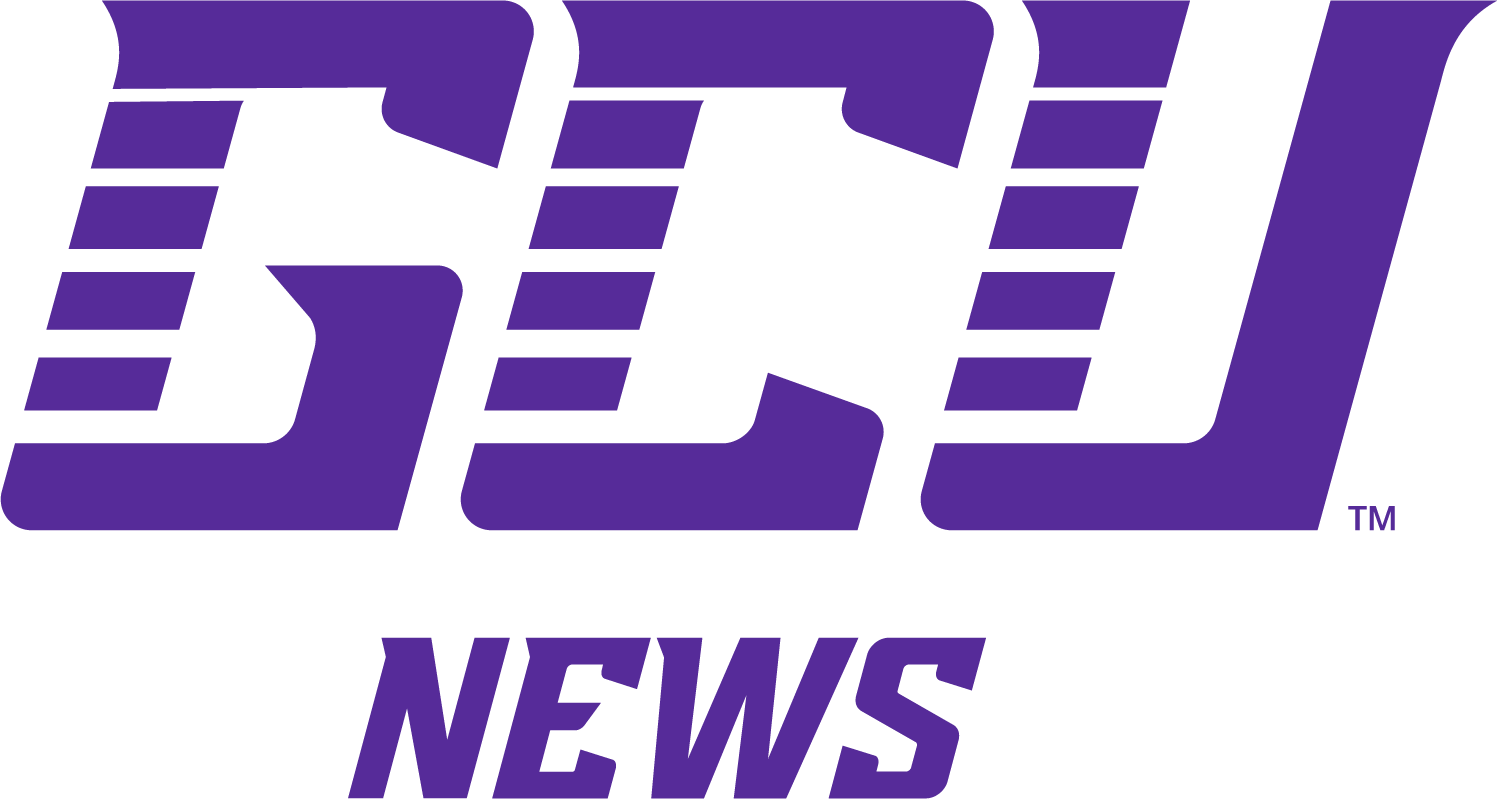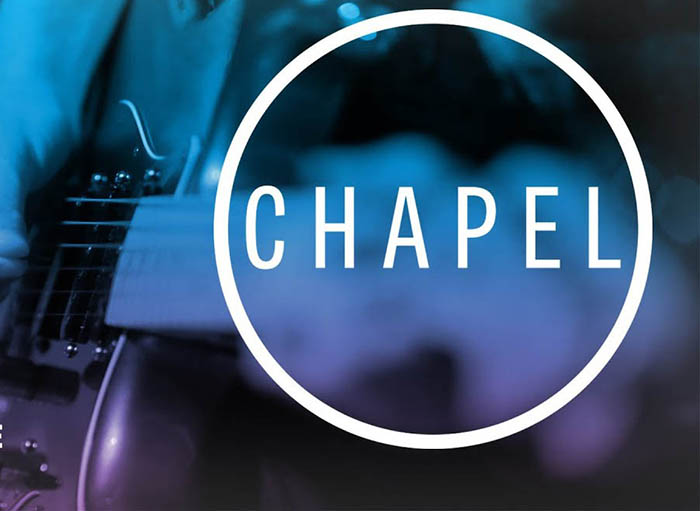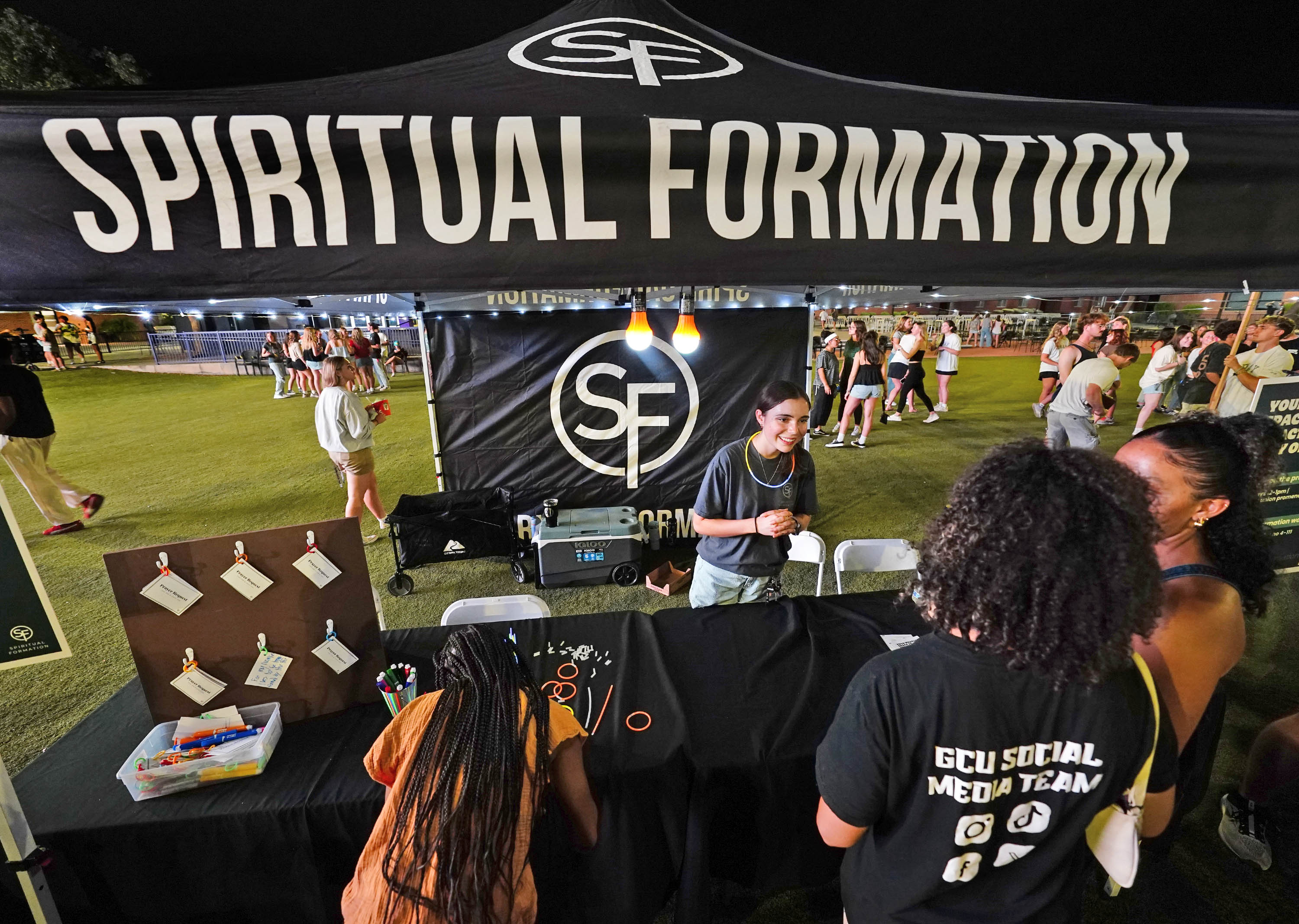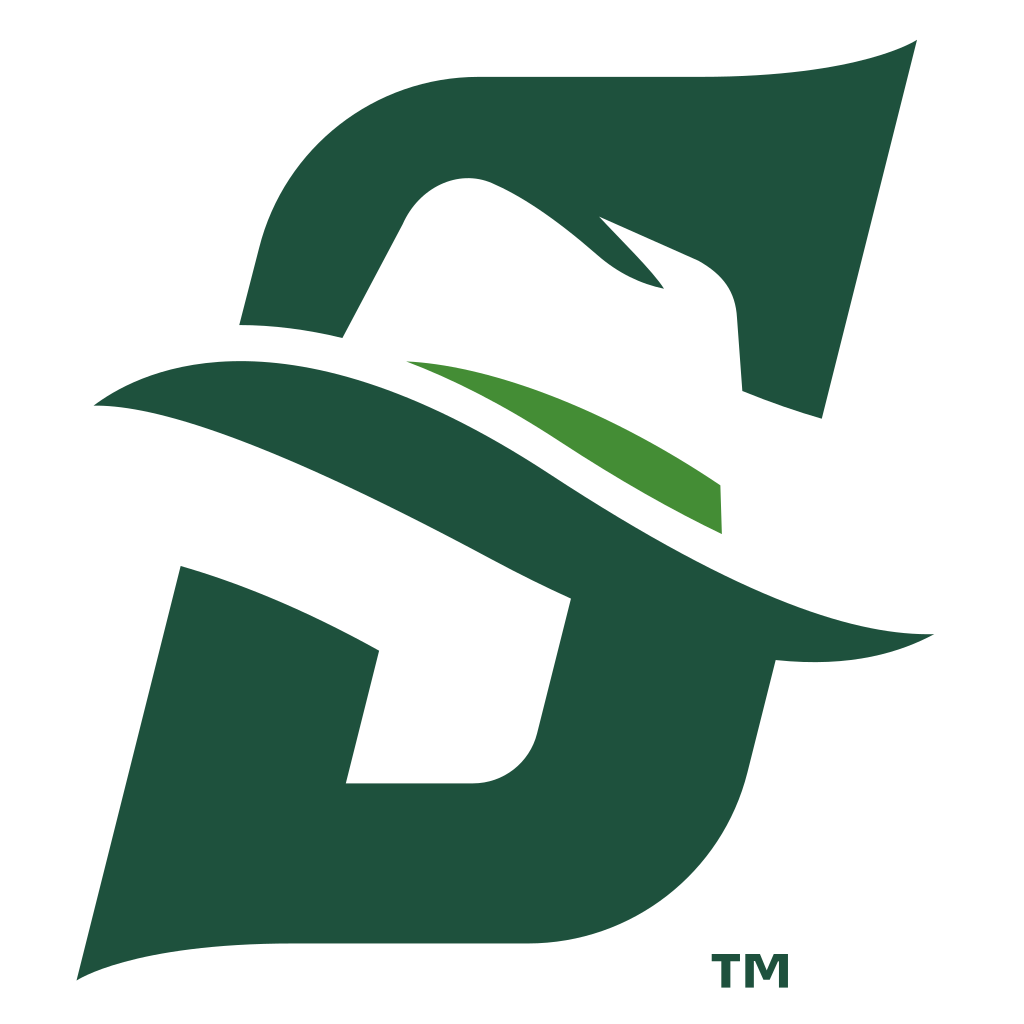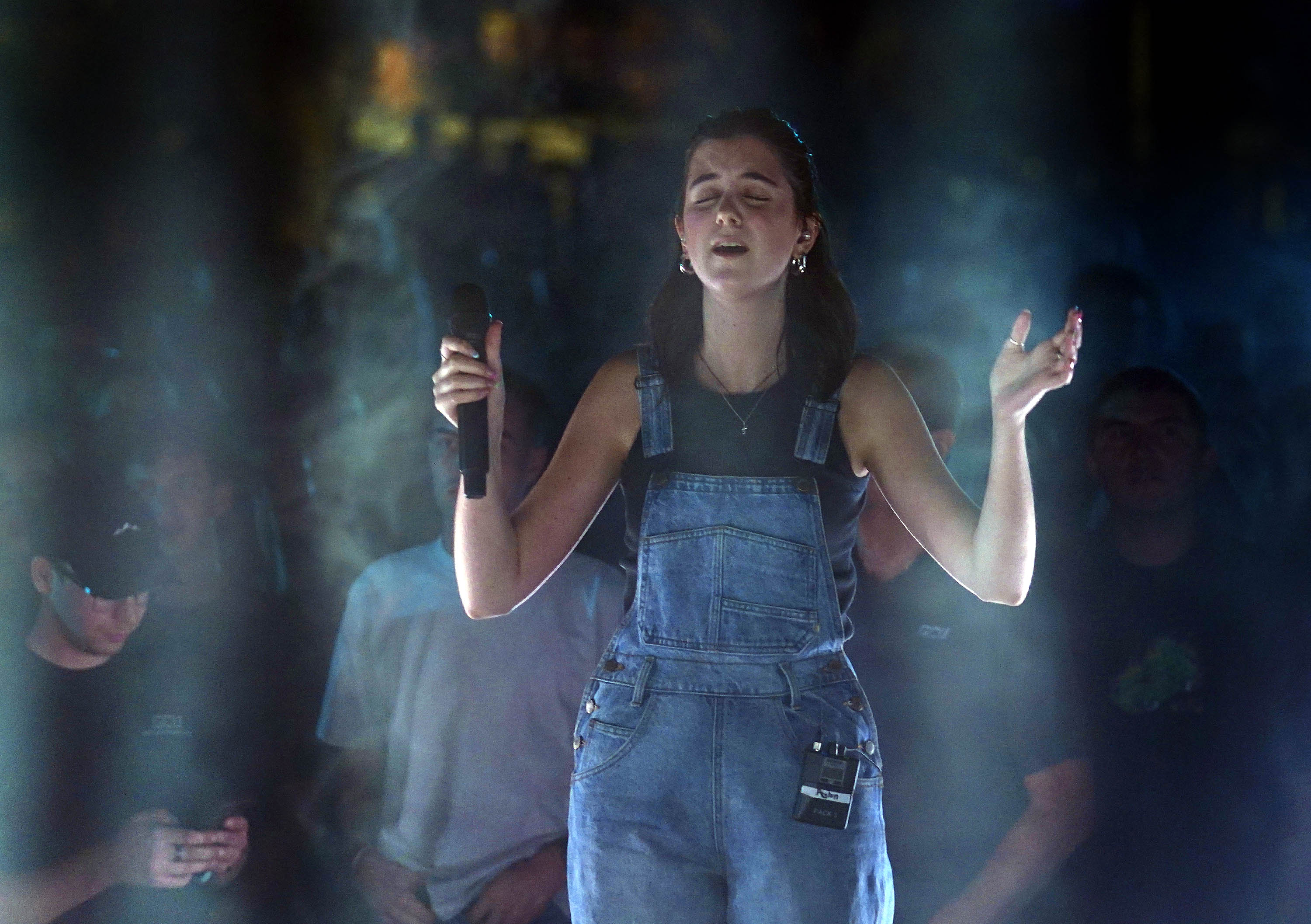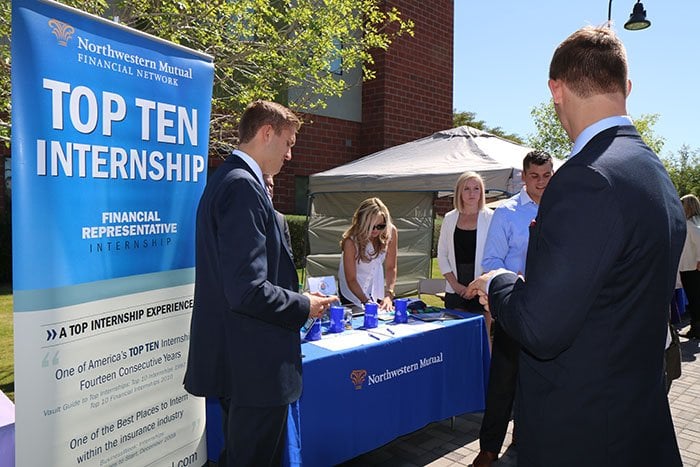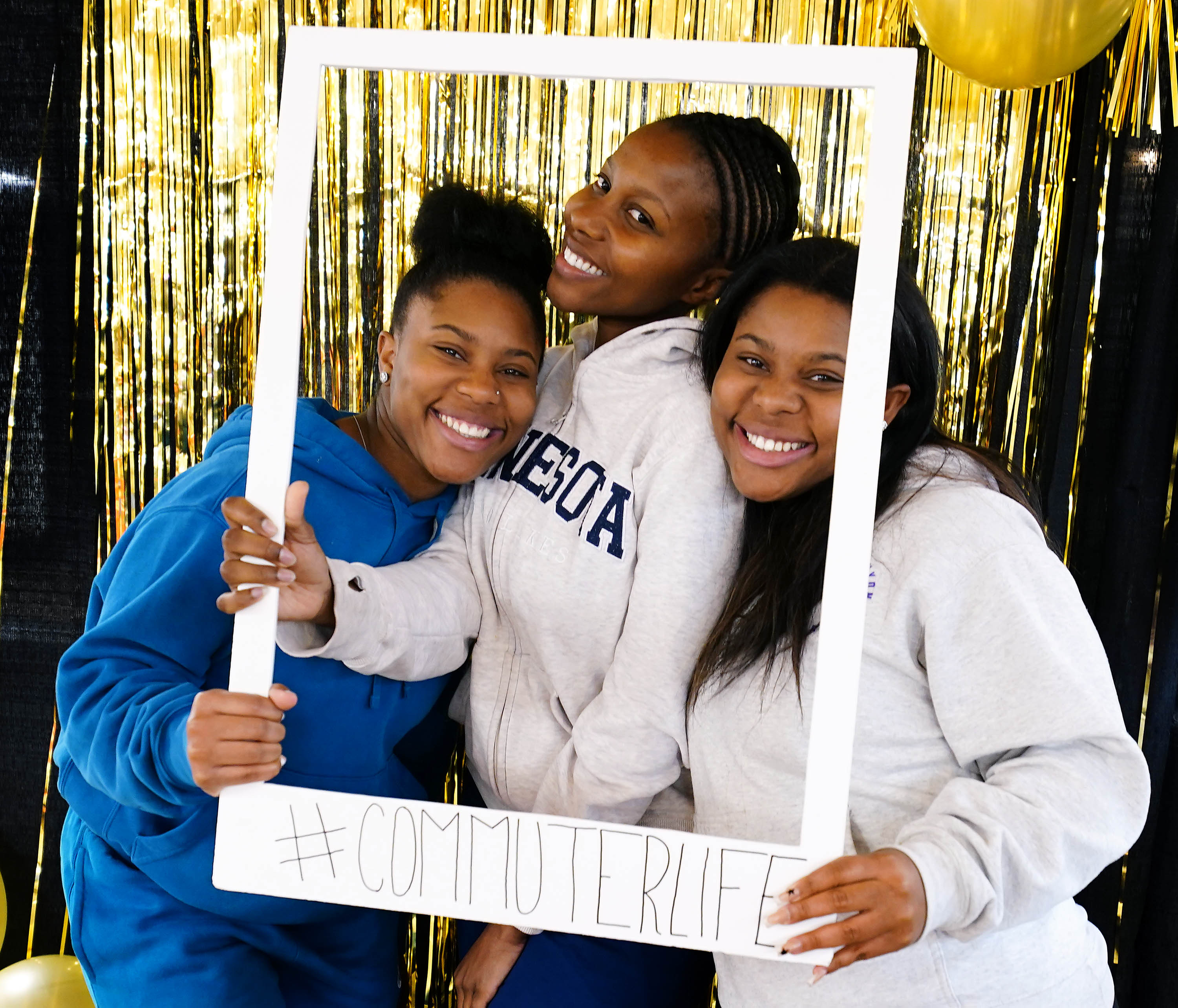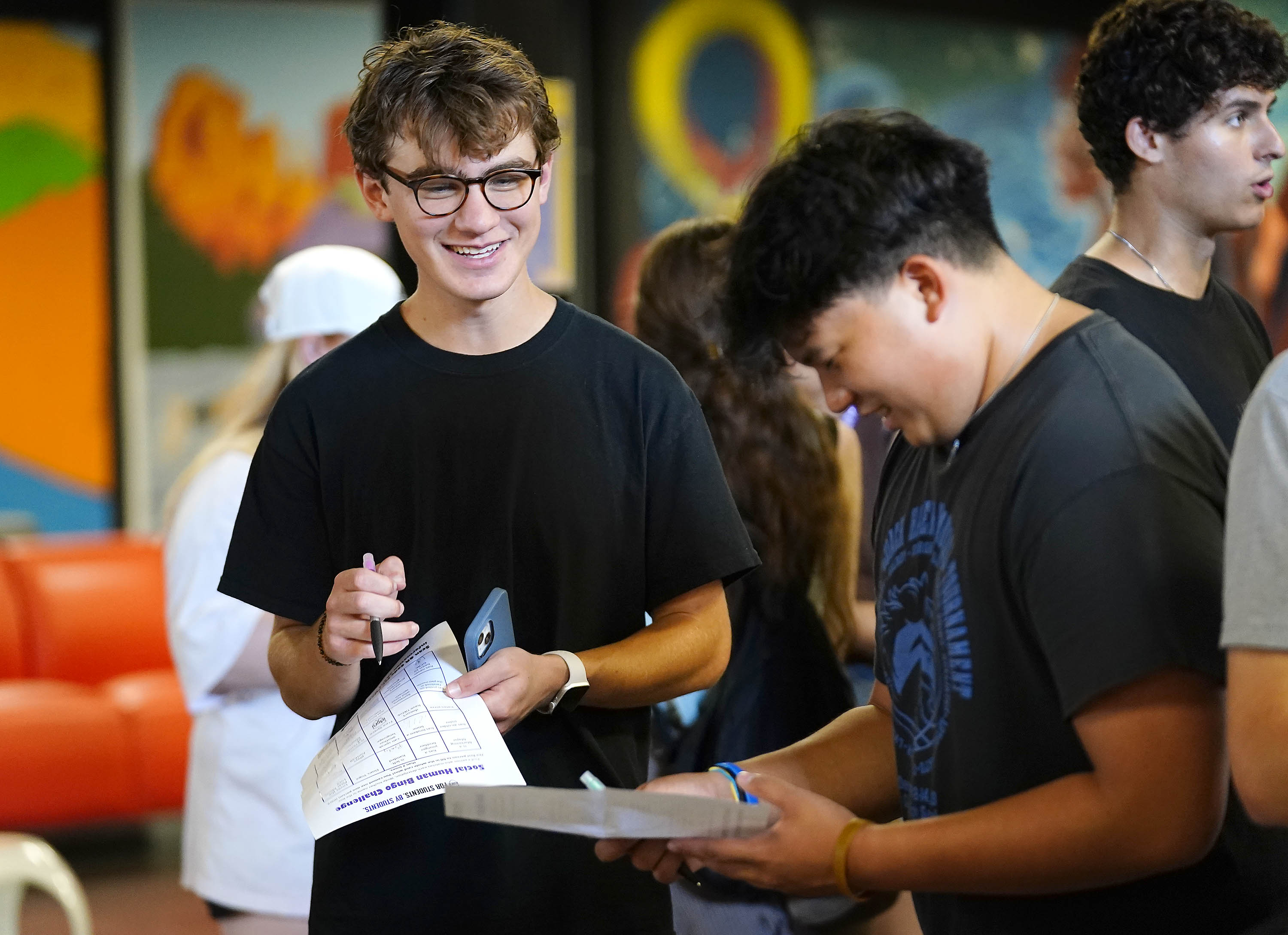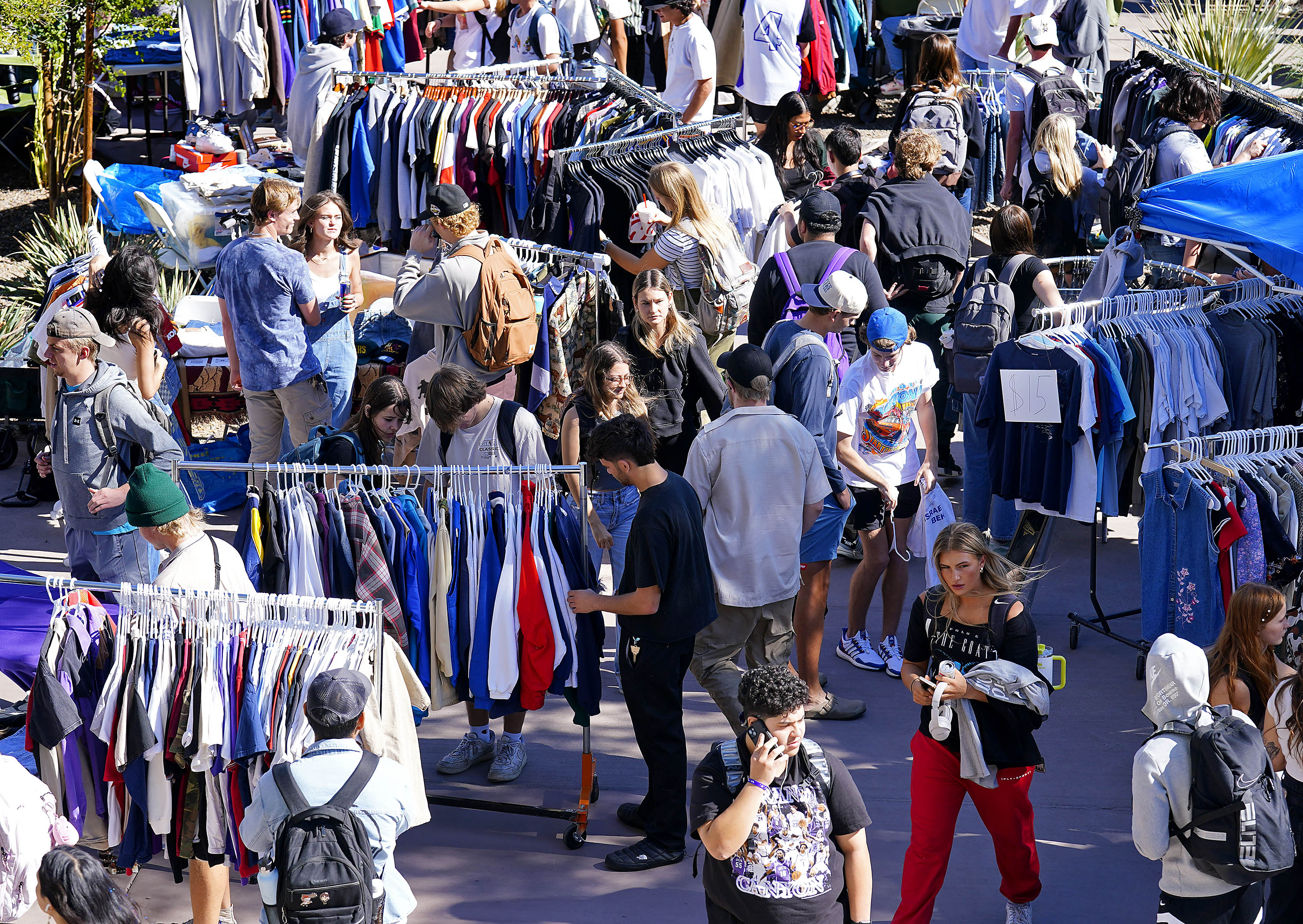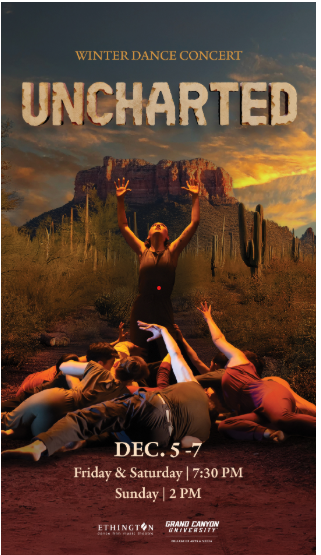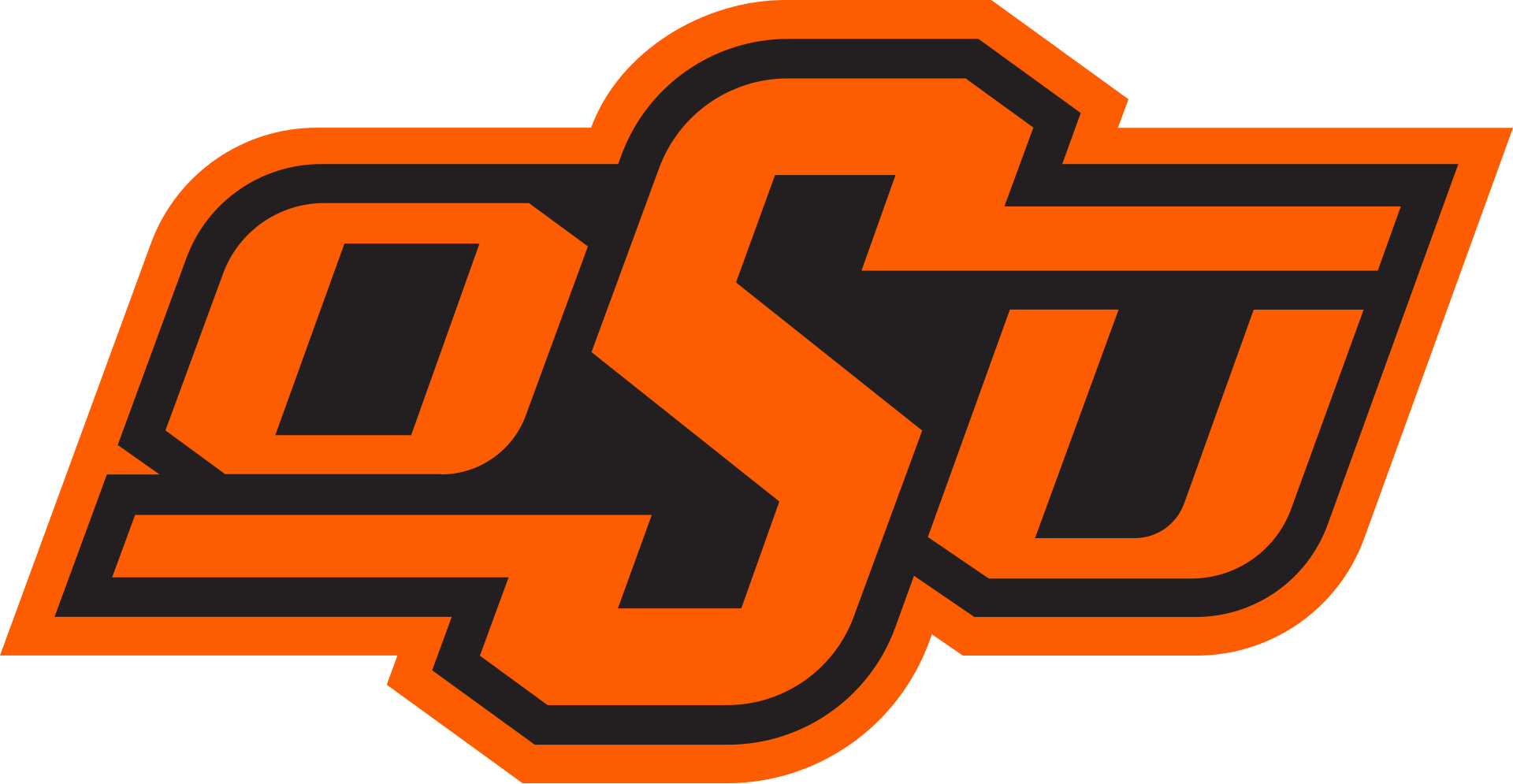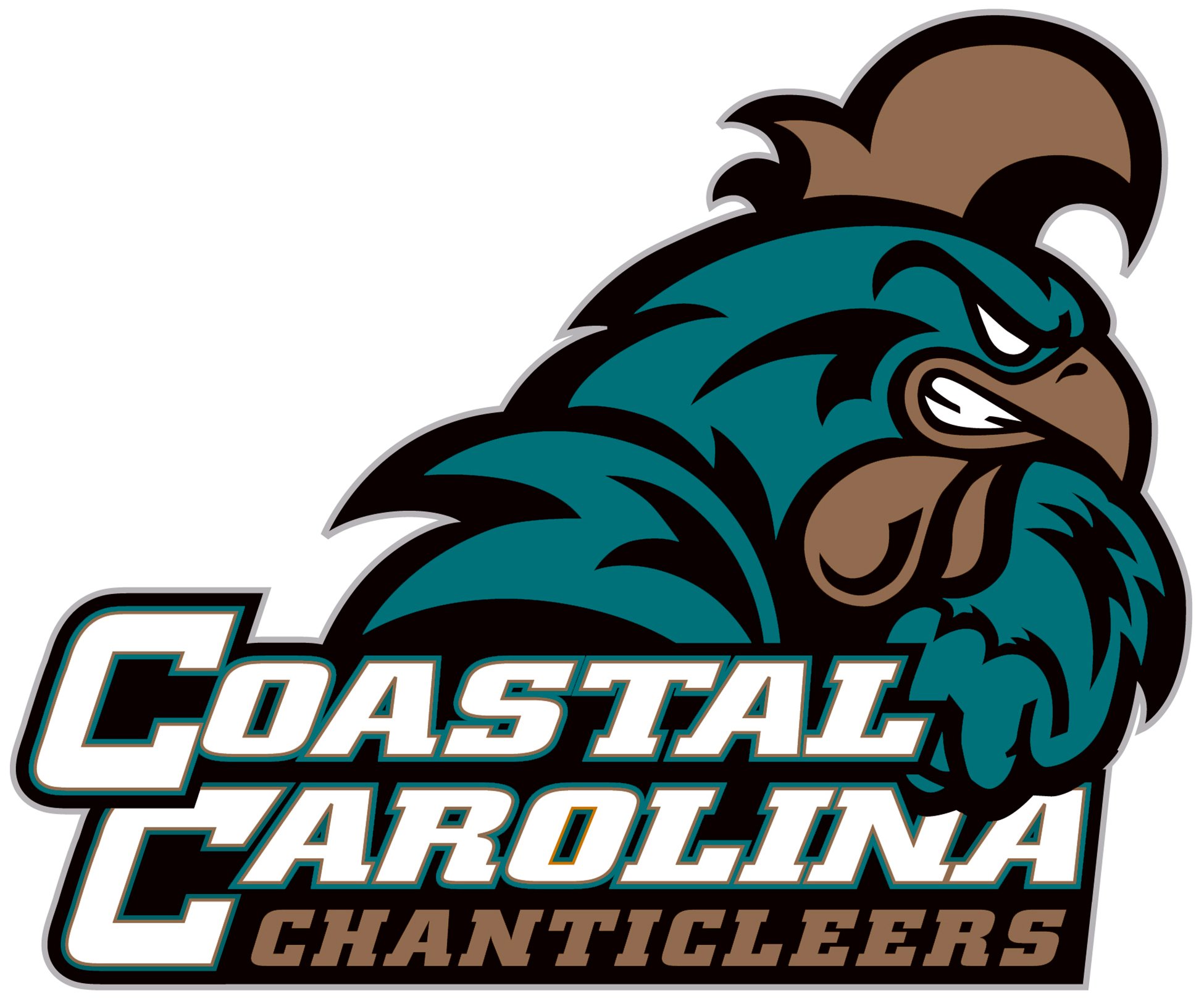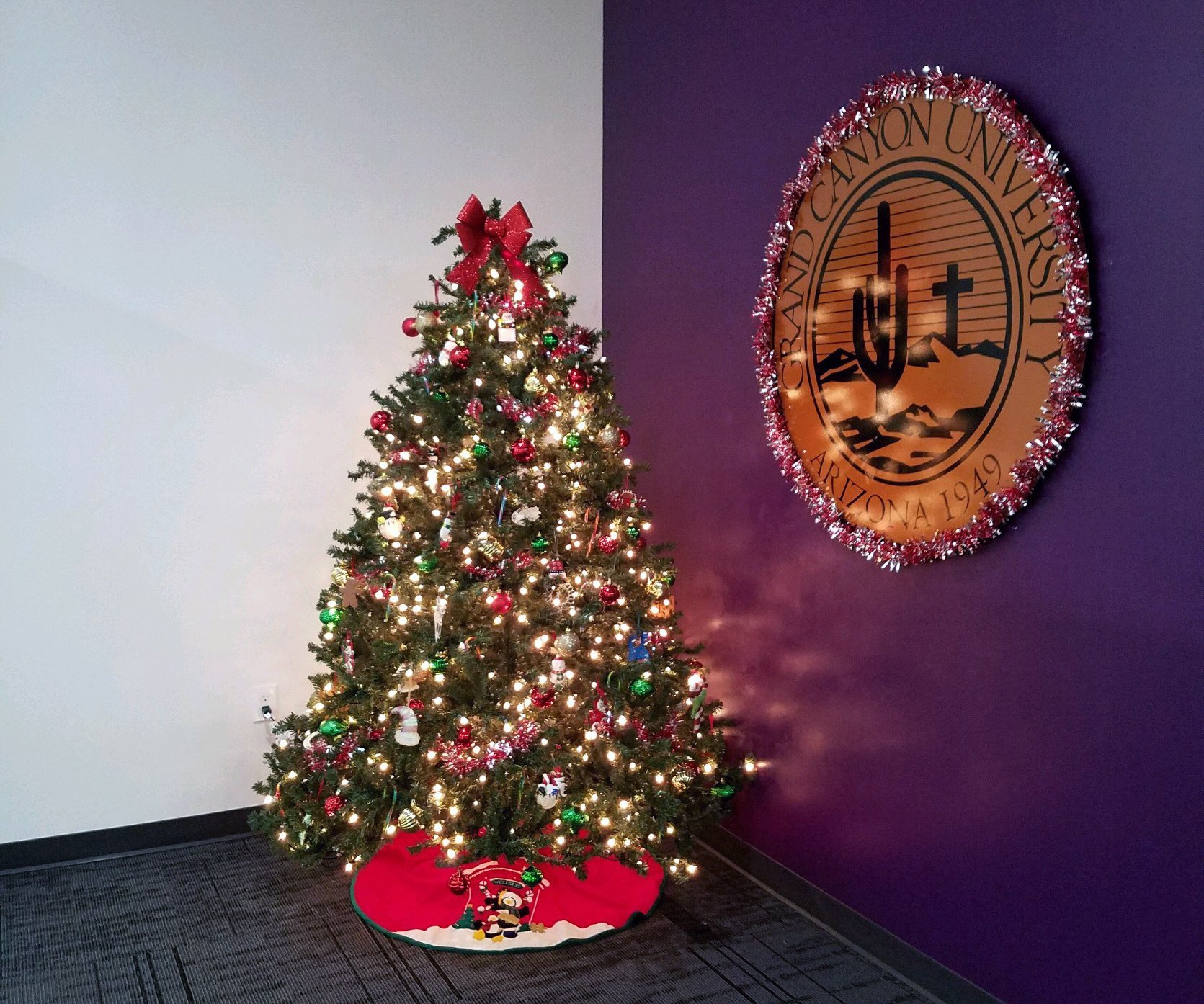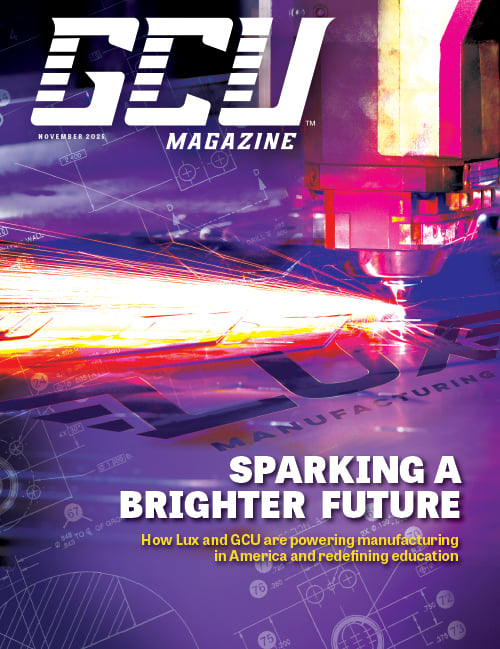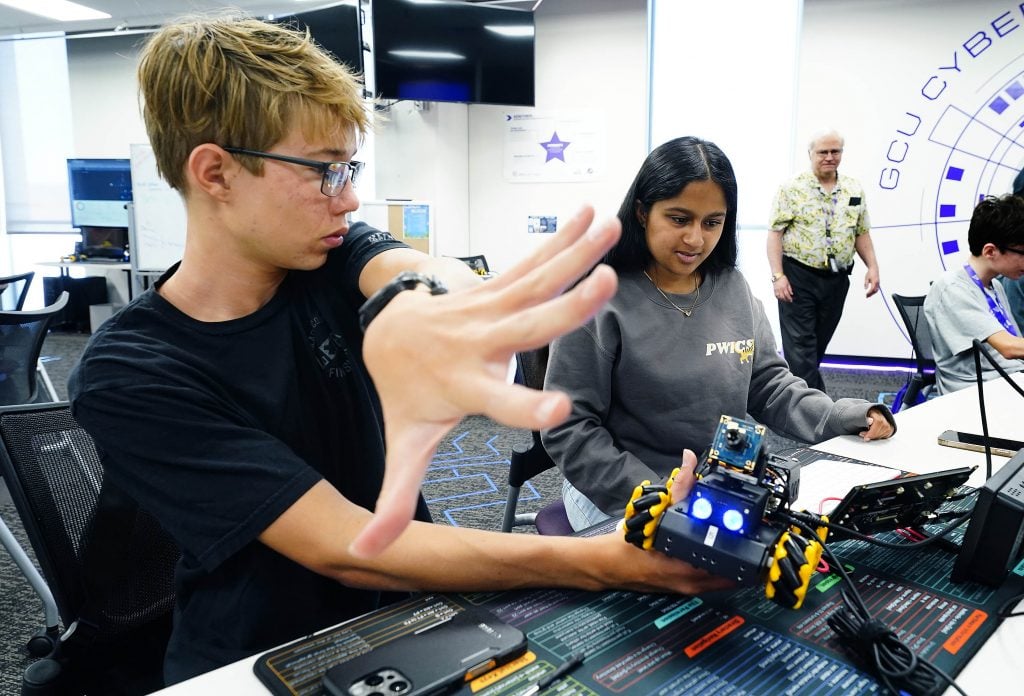
Photos by Ralph Freso / Slideshow
Your team’s mission, which it chose to accept:
Approach the stack of red cups, and using a rubber band, on which several pieces of strings are attached so team members can control the rubber band, unstack the cups and restack them into a pyramid.
Go!
The GenCyber Camp for high schoolers unleashed a frenzy of activity on Tuesday in Grand Canyon University’s Cyber Center of Excellence.
“Team The People is in the lead!” said camp instructor Dr. Vanessa Curley-Ward, donning a planet-themed dress in honor of all the science going on. Then she pipes in a few seconds later with an update, “Oh, Team Twinkies is taking the lead!”
The cup-stacking, team-building activity kicked off the day of hands-on exercises and neuron-sharpening lessons that 32 high school students – some from as far as Chicago, Atlanta and California – dived into at the weeklong GenCyber Camp, designed to spark a love for cybersecurity, with the hope they’ll be inspired to pursue a career in the field.
According to the 2024 ISC2 Cybersecurity Workforce Study, an estimated 4.8 million cybersecurity jobs are unfilled worldwide.
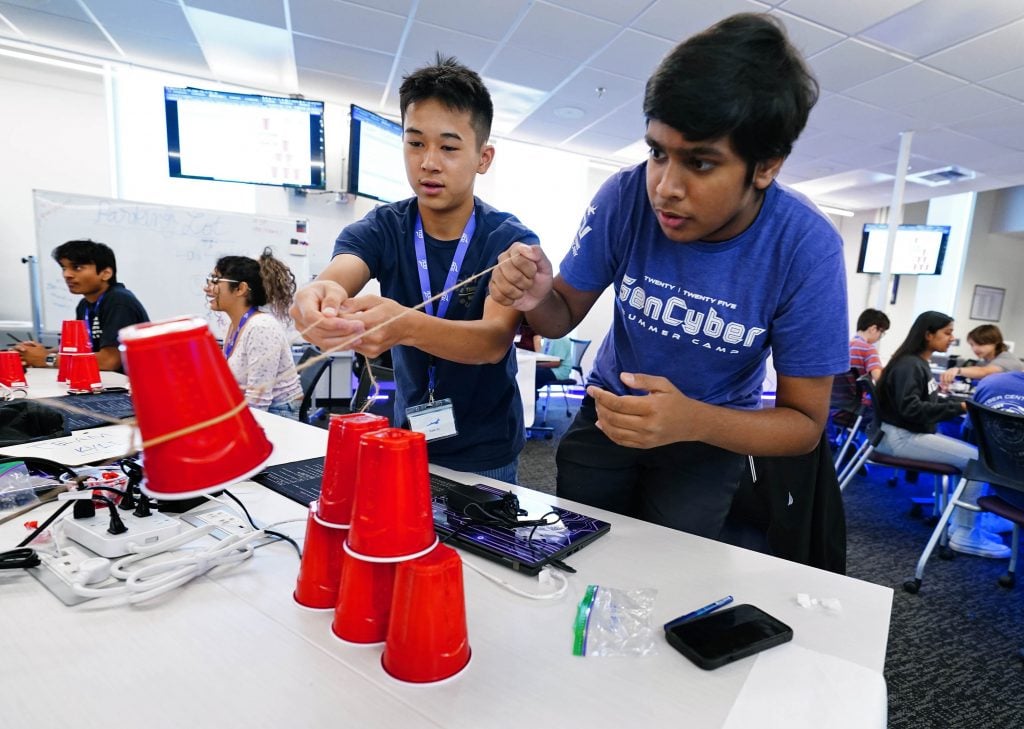
The science-forward initiative, which launched in 2014 with eight prototype camps and now averages more than 100 programs annually in 35-40 states, is financially supported by the National Security Agency, the National Science Foundation and other federal partners.
It is closely aligned with the National Centers of Academic Excellence in Cybersecurity program and is often the first cybersecurity experience for its participants.
Cup stacking complete, Team Something and Team the People rose to the top as the finalists of the team-building activity. Now it was time to defend why each team stacked the cups – each labeled with words like “application,” “transport,” “network” and “data link.”
“You have to have the best defensive answer,” said Dr. Cori Araza, senior project director of K12 Services and Solutions and one of about a dozen GCU faculty, staff and students teaching the camp under primary instructor Dr. Dwight Farris, GCU faculty lead in cyber.
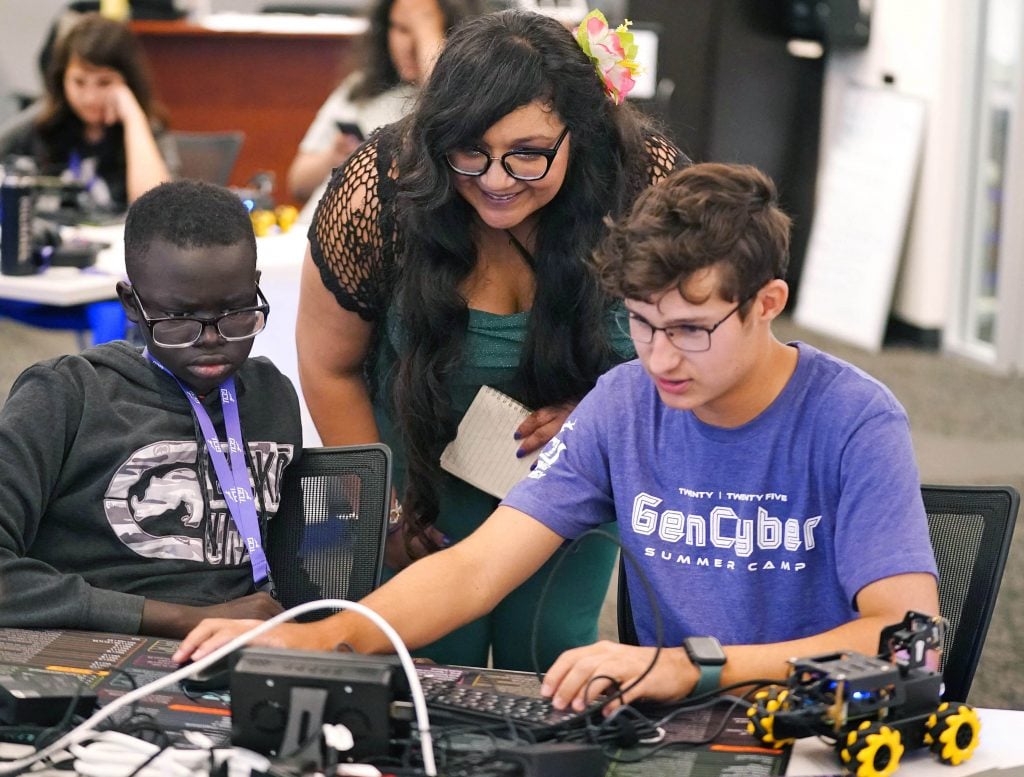
Antonio Laurel Perez, a recent graduate of Phoenix Coding Academy who is slated to be a freshman at GCU this fall, admitted his team didn’t stack the cups in any particular order.
“We stacked it just to stack it. But after reading the labels, I know what it’s in reference to,” said Laurel Perez, who excelled at the camp’s Capture the Flag game, in which participants look for a hidden clue or file (a flag) by using cybersecurity tools.
He realized the cups represented the seven layers of the Open Systems Interconnection model, which computer systems use to communicate over a network.
Students on Tuesday – Day 2 of the weeklong camp – also explored how emails get from one person to another.
Hands shot up as students answered the call from Araza to explain how they think an email gets from place to place.
She heard students mention service providers, routers, switches.
What surprises me about these kids is how knowledgeable they are -- and how quickly they picked up the content even teachers struggled to grasp.
Dr. Vanessa Curley-Ward, camp instructor and graduate of GCU's GenCyber Camp for teachers
“We’re going to simulate what it’s like to send an email,” she said, as Joseph Urbaszewski, coordinator of GCU’s cyber range, took his place at one end of the room, holding a piece of paper with “router” written on it.
He was just one router in this email-re-enactment scenario, a melee of Wild West lawlessness as campers poked through doors, then streamed back into the room with packets of information to deliver to different “routers,” like the one represented by Urbaszewski.
As it turns out, emails don’t just meander your way in a straight line. Email delivery isn’t that neat and polite. Who knew?
They’re broken into smaller pieces of data called packets, each packet containing information about where it came from and where it needs to go. It bustles through a series of interconnected networks called routers, with different packets going through different routers then meeting up, somehow, at the final destination to be reassembled into the email message.
But even the frenzied email activity might not have transported these young campers as much as Thursday’s robot activity, when Graham Coleman, a senior at Tucson’s Tanque Verde High School, analyzed a track on the ground designated by blue tape.
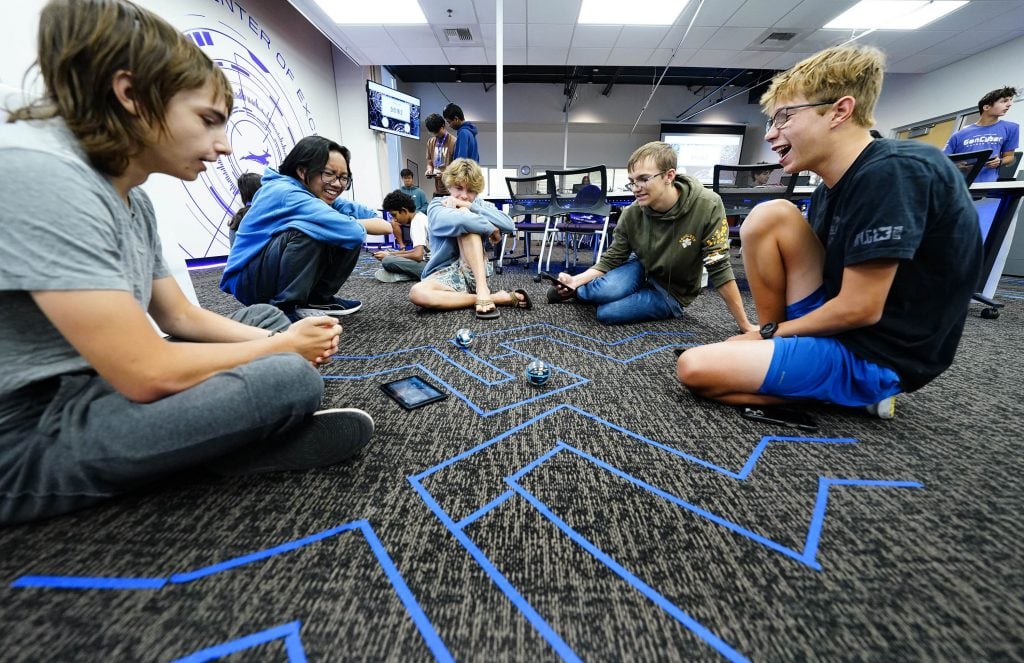
“We pretty much want it to go straight, then a 90-degree turn, then a 90-degree turn,” he declared, looking at the track his team’s Sphero Bolt Coding Robot Ball – a cute spherical robot that fits in the palm of your hand – would follow, depending on how his team programs the robot using block programming.
When the robot overshoots track after a teammate codes its movements, Coleman yells, “Oh!” in excitement, then after a programming adjustment fixes the problem: “That was good, though … that’s the distance, that’s the distance.”
His teammate, Euwain Sheard, a home-schooled student from Scottsdale, watches a second Sphero approach the first robot. The goal, to knock the second robot into the first one. The idea is that the jolt will prompt the second ’bot to complete the track.
“You got this! You got this!” Sheard tells robot No. 2 in encouragement.
It was excitement overload, and that was just the programming portion of the activity. A second activity with different kinds of robots, and perhaps a race or two, would follow.
This is the fifth year GCU has been a GenCyber Camp site, with the College of Engineering and Technology and K12 Educational Development hosting the cybersecurity education camps for both high schoolers and educators.
Each year, students seem to become more sophisticated when it comes to computers and cyber, said Curley-Ward, a STEM teacher at Vail Unified School District in Vail, Arizona, who took the GenCyber Camp for teachers last summer.
“What surprises me about these kids is how knowledgeable they are – and how quick they pick up the content even the teachers struggled to grasp,” she said. “… It’s a little humbling at times, you know, to see how good they already are.”
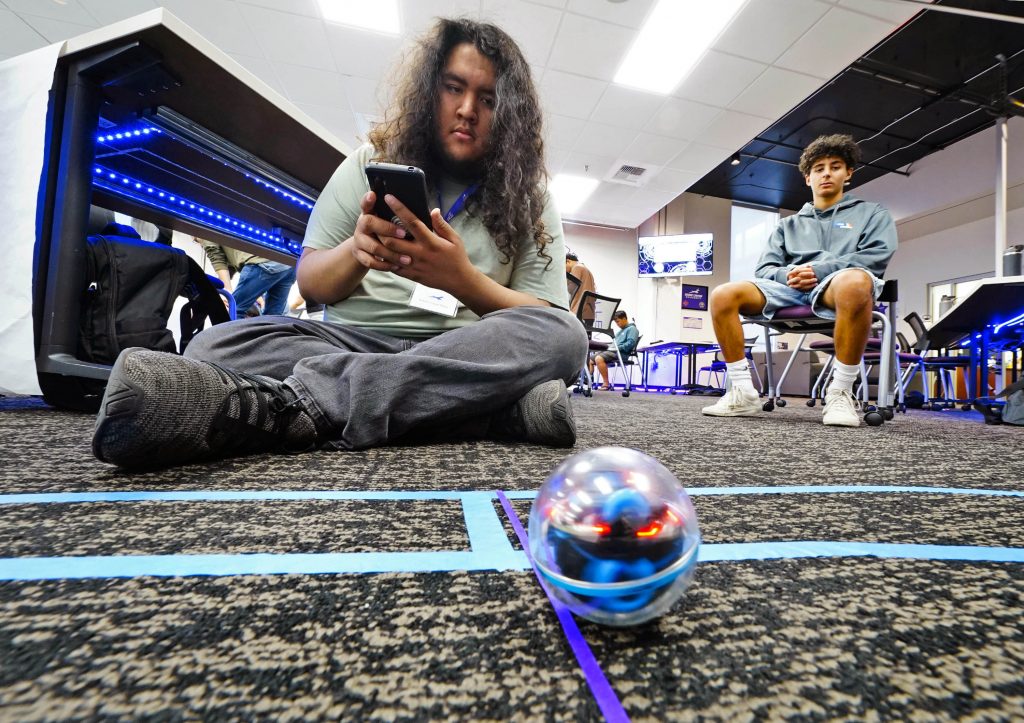
“Most of them are way more advanced in this stuff (than me),” added Tyler Heckel, a GCU English-for-secondary-education major and student worker with K12 Educational Development.
Heckel wasn’t the only GCU student facilitating the camp, right alongside experienced educators like Araza and Curley-Ward.
Viviana Pacheco, a student worker in the Cyber Center of Excellence and an intern with the Arizona Department of Homeland Security, stepped up to help teach the camp.
What fascinated the cybersecurity senior was just how eager to learn the campers are.
“I feel like every group amazes me every time. … Each student is coming in with a desire to learn that shocks me, but in a good way.”
Coleman had that desire to learn, saying what he took away from the experience that he didn’t know before he signed up for the camp was Wireshark, a tool used to capture and analyze email traffic.
“I just like learning all the different things you can do with computers,” said Coleman, whose favorite camp activity was programming the Sphero Bolt robots.
Same for Riley Famania, who’ll be a 10th grader at Paradise Valley High School in the fall. He loved how in depth GenCyber camp was. He came into camp knowing a little something about cybersecurity – he has taught himself a few things at home.
“But it’s nothing compared to what I’m learning here.”
Internal Communications Manager Lana Sweeten-Shults can be reached at [email protected] or at 602-639-7901.
***
Related content:
GCU News: GCU set to boot up its Overclock cyber residence in the fall
GCU News: International association recognizes GCU for cybersecurity excellence
